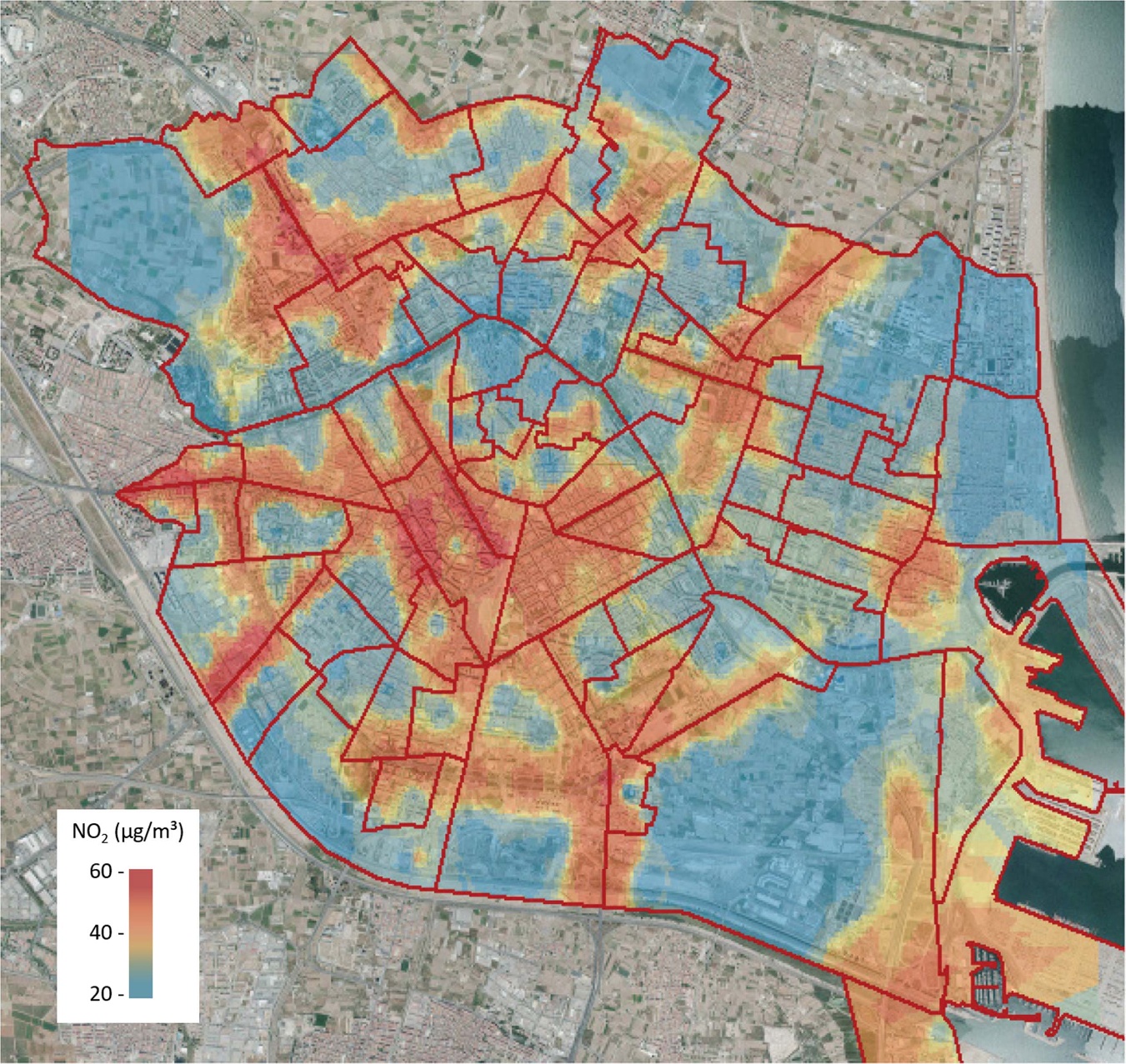Today, around 55% of the world’s population lives in cities and this is projected to increase to 68% by 2050. Concentrated traffic and other urban activities mean that air quality levels in cities are detrimental to the human health. The European Union (EU) has established a regulatory framework to control and improve air quality levels in cities (Directive 2008/50/EC) through fixed stations. Valencia only has seven stations.
The research group ICT against Climate Change of the ITACA institute of the Universitat Politècnica de València (UPV), together with the company Mesura, the social platform València per l’aire and the Joint Research Center (JRC) of the European Commission, has designed and installed a network of 424 mobile passive dosimetry sensors distributed throughout the city for the measurement of NO2 with the aim of evaluating the air quality reported by the official fixed stations during the period 2017-2019.
According to José Vicente Oliver, director of the research group and professor at the UPV, the results obtained show that during these three years 43.7% of mobile sensors exceeded the limit value established by the EU Directive as well as by the Organization World Health Organization (WHO).
“This indicates that the air quality levels offered by the fixed stations are not representative or reliable for monitoring the city’s air quality. Thus, the fixed stations that currently operate do not provide accurate information on the areas of the city where the majority of the population breathes air with the highest level of pollution. Specifically, the results show that 34.6% of citizens (273,000) live in areas with an average annual value higher than the recommended limit for the protection of human health ”, says Oliver.

The UPV researcher and project coordinator Edgar Lorenzo adds that “the study reveals that while the seven official air quality stations do not exceed the annual mean limit of NO2 concentration values (40 μg m−3), the annual mean values of NO2 from the complementary mobile network exceed this limit in almost half of the total mobile sampling locations ”.
These are the neighborhoods with the worst air quality
The UPV team has developed, based on big data tools, an index that identifies and classifies the 69 neighborhoods according to the level of pollution and the exposure of the population to the concentration of pollutants. And this is the conclusion: the neighborhoods with the worst air quality are Benicalap, Beniferri, Torrefiel, Rascanya and Benimaclet in the north, l’Olivereta, Nou Moles, Arrancapins, Patraix and Jesús in the west, Malilla in the south, El Grao and Nazareth in the east and Russafa in the center of the city.

In addition, Edgar Lorenzo adds that “the seven stations are not well located according to the real exposure of the population to pollution, since they do not measure the air quality in the city in a representative way. Only one is located in a representative area (Russafa), the rest should be installed in Benicalap, Arrancapins, Malilla, Nou Moles, Patraix and Torrefiel ”.
The results of this study have recently been published by the scientific journal Environmental Research Letters. The research has been possible thanks to the collaboration agreement between the UPV, the Valencia City Council and the EU JRC, framed in the Chair of Governança of the city of València.
According to the Deputy Mayor of the Democracy Participation, Rights and Innovation Area, Elisa Valía, “based on the results obtained from this three-year investigation, the Department of Transparency and Open Government of the Valencia City Council is very interested in that UPV researchers continue to advance in the study of the relationship between the distribution of pollutants and the socio-cultural and economic characteristics of the neighborhoods to evaluate environmental justice and equity, together with an analysis of the different pollutants and their influences on the cardiorespiratory -including COVID- and oncological illnesses”.
Reference
Edgar Lorenzo-Sáez, Jose-Vicente Oliver-Villanueva, Lenin-Guillermo Lemus-Zúñiga, Eloina Coll-Aliaga, Carolina Perpiñá Castillo and Carlo Lavalle. Assessment of an air quality surveillance network through passive pollution measurement with mobile sensors. Environmental Research Letters, Volume 16, Number 5. doi.org/10.1088/1748-9326/abe435
Source: UPV’s Information Office



